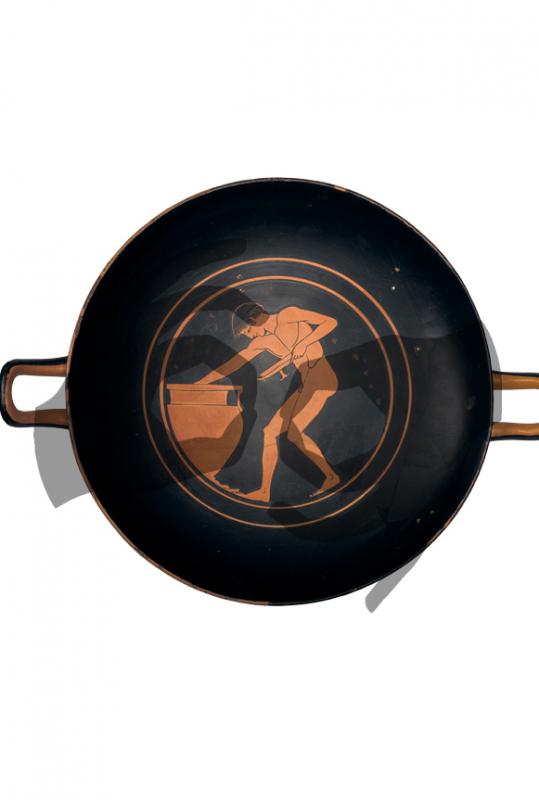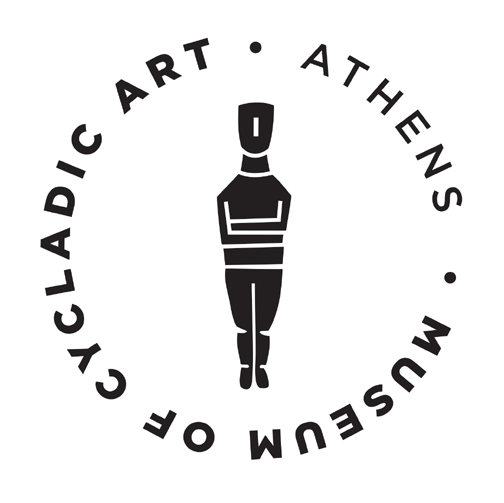
Red-figure kylix
Red-figure kylix
This magnificent kylix of the Late Archaic period is attributed to the Antiphon Painter, an artist who had a penchant for symposium scenes as well as for bold erotic subjects. Shown on the inside of the cup is a naked youth drawing wine from a krater, in order to fill the kylix he holds in his hand. According to the inscription the young man is named ΛΥΣΙΣ (Lysis), while his beauty is praised by the addition of the epithet ΚΑΛΟΣ (fair). The habit of naming and praising the comeliness of some young men, usually from wealthy aristocratic families, is attested already from the mid-6th and throughout the 5th c. BC. The scene refers to the symposium depicted on the outside of the vase. The symposium –a gathering of men, mainly of aristocratic status, who drank, ate and discussed– were a very important social institution in antiquity and played a decisive role in the birth and spread of Archaic poetry. In this representation, the participants amuse themselves with cottabus, a popular erotic game played after the meal was over, during the potos (drinking), which was the most essential part of the symposium. The symposiasts twiddled their cup (kylix), holding the handle with the right index finger, and tried to throw the wine –without spilling it– into a target on the floor, while simultaneously naming the person whose love they wished to win. If the thrower managed to hit the target, he was supposed to have won in love too. The game, which was introduced to Greece and Etruria in the 6th c. BC, was also known as sikelikon (Sicilian) because it was considered to have been invented by the Dorian colonisers of Sicily.





